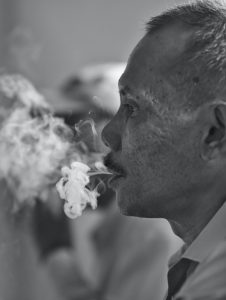New Citations | BIOPAC in Exercise Physiology
Exercise physiology is the study of the body’s response to physical activity. Research in exercise physiology allows for insights in health and for a better understanding of the functions of the body at work. Here are some recent studies in exercise physiology that utilized BIOPAC tools for their research…

Effect of exercise on electrocardiographic parameters amongst smokers and non- smokers. European Journal of Molecular & Clinical Medicine, 9(7), 8954-8958. Kantharia, R. V., Modi, S., & Babubhai, P. A. (2022).
This study looked for variations in ECG before and after exercise in smokers compared to non-smokers. Baseline pulse, blood pressure and ECG were recorded for each participant, and they were divided into two groups, smokers and non-smokers, for comparison.
Effects of Chair-Based Fidgeting and Age on Prefrontal Brain Activity and Cognitive Performance. Journal of Speech-Language & Hearing Disorders (언어치료연구), 32(1), 91-98. Hwang, J., Kim, I. S., Madasu, C., & Lee, C. (2023).
In this study, researchers recorded prefrontal cortex activity in both young and older adults when sitting at a conventional workstation compared to sitting at a workstation equipped with an under-the-table leg-fidgeting bar. BIOPAC’s fNIRS system was used to record the prefrontal cortex activity while participants completed neurocognitive tests.
Effects of multicomponent exercise training on muscle oxygenation in young and older adults. Journal of Exercise Science & Fitness, 21(1), 138-146. Lin, T. Y., Chen, J. J. J., Lin, L. L., Yang, W. T. O., Chen, M. Y., & Tsai, Y. C. (2023).
Researchers recorded muscle oxygenation, muscle strength, and electromyography both before and after participants performed multicomponent exercise training in order to discover its effect on young and older adults. Participants completed exercises 2-3 times a week for 12 weeks.
Stay Connected